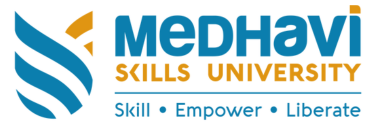The Importance Of Netiquette In Professional Online Communication
Its asynchronous nature and ability to convey detailed information make it indispensable, yet its misuse can lead to overflowing inboxes, missed information, and a perception of disorganization. For managers, impeccable email etiquette is a hallmark of professionalism and efficiency. To pick the best way to communicate online from the above options, first you must know your needs and what you want to achieve. You also need to understand that just like all technologies, the way you can communicate online with other people is constantly evolving. Voice over Internet Protocol commonly known as VoIP, is a combination of software and hardware that enable you to use the Internet to transmit telephone calls.
Enter Behavior Driven Development (BDD), a methodology aiming to minimize misunderstandings and focus on the behavior of the software. This article explores the role of BDD in enhancing workflows and fostering effective communication in modern software production. Chat rooms are another option for instant messaging that allow you to communicate with multiple people in a group or community setting. You can access chat rooms through websites like Mibbit, mIRC, and Discord. Some social media sites, like Facebook and Tumblr, have in-built instant messaging features, while some voice/video calling apps, like Skype, also offer text messaging. It offers flexibility, accessibility, and convenience but lacks non-verbal cues.
For managers, cultivating empathy in online asian-feels.com/ interactions is crucial for maintaining morale, fostering psychological safety, and building a cohesive team. In the fast-paced digital environment, attention is a precious commodity. Lengthy, convoluted, or ambiguous messages are often skimmed, misunderstood, or simply ignored. For managers, whose directives and feedback are critical, clarity and conciseness are not merely good practices; they are essential for operational efficiency and preventing costly errors. These platforms allows members to connect with their friends and make new friends from across the world. They also allow members to share with their friends, followers or connects within the platform.
Online communication can involve different mediums and modes, such as text, audio, video, or images. Each of these has its own advantages and disadvantages, and you should choose the one that best suits your message and audience. For example, text may be more convenient and efficient, but it may also lack the nuances and cues of voice or body language. Audio or video may be more personal and expressive, but it may also require more bandwidth and attention. Images may be more engaging and illustrative, but they may also be more distracting or misleading. Be mindful of the medium and mode you use and how it affects your communication.
How To Get Out Of Awkward Situations: 16 Helpful Strategies
Online communication is a vital skill in today’s world, whether for work, education, or personal relationships. However, it also comes with some challenges and risks, such as misinterpretation, misunderstanding, or even conflict. How can you ensure that your online communication is professional, respectful, and effective? Social media as a means of collaboration and communication has been used intensively for the last ten years. Facebook and its Facebook Messenger, along with Twitter, have converted social media into the premier space for sharing thoughts and chats. Instagram added a feature to leave instant messages and send voice messages as well, which is very convenient, as Instagram is now the most popular network globally.
It can be as detailed as how you communicate, including defining the type of tools you use for which information. For example, you may define when it’s appropriate to use a group chat for the entire team or organization or when a meeting should have been summarized in an email instead. Simply put, you cannot communicate effectively with others until you can assess and understand your own feelings.
But for neurodivergent learners in particular, the unwritten rules of digital communication can feel especially unclear. Many students struggle to pick up on tone, pacing, and communication boundaries without direct instruction. In the digital age, managers are entrusted with a vast amount of sensitive information – employee data, client details, proprietary company strategies, and financial figures. Protecting this information is not just a matter of compliance; it’s a fundamental ethical responsibility and a cornerstone of trust.
When You Need To Send More Comprehensive Or Official Messages, Email Is The Way To Go
- For managers, recognizing these behaviors and addressing them swiftly and appropriately is a critical aspect of maintaining a respectful and productive digital work environment.
- Online communication can involve different mediums and modes, such as text, audio, video, or images.
- If you encounter a conflict or a problem, focus on finding a solution rather than blaming or criticizing.
- Even the most effective communicator may find it difficult to get their message across without a workplace communication strategy.
To make it proficient and boost the productivity of the interaction, use the tools and rules mentioned in the article. For instance, use email when a business or private communication calls for a longer message, and use an email client, such as Mailbird, to manage your online correspondence more effectively. You’d think, to build effective communication and help you achieve the goals you set, it is important to choose the right tool. There are plenty of them for different purposes, and using the right type will help improve your professional communication. To build effective online communication, make sure you use the right type of tool. In the rapid-fire world of online communication, it’s tempting to hit “send” the moment a message is drafted.
If you are writing an email in response to something that you feel strongly about, it is worth pausing before you send it. If this is the case, encourage them to contribute to the discussion through the chat, a shared Google Doc or similar. If your experience of breakout groups so far has been one of the awkward silences and muted microphones, or of discussions dominated by one or two individuals, read on. Activities within a breakout group may be structured or open, but their usefulness as a learning tool relies on the positive engagement of all members within a group. Is there anything in-shot, such as posters, images or words on clothing, that is likely to cause offence to others, or reveal personal information you do not want others to see? Your tutor may set boundaries at the beginning of the session as to how or when you ask questions and by what means you can get their attention (raise your hand, just start talking etc).
Before posting, think about whether you want anyone and everyone to have access to it. Different online groups may have unique expectations for the conduct of their members. Before you join a group, such as a Facebook group or a discussion forum, take a moment to read its rules. A good rule of thumb is to treat others online the way you would in person. When expressing your disagreement, focus on the argument instead of attacking the person.
To avoid coming across as hostile or unintentionally offending someone, use a friendly and professional tone. Avoid using all caps, excessive exclamation points, or aggressive language. Before hitting send, read over your message to ensure that it conveys your intended tone. Netiquette, or the set of rules for communicating effectively and professionally online, is increasingly important in today’s digital age. With so much communication taking place through email, messaging platforms, and social media, it’s more important than ever to understand the etiquette of online communication. Without proper netiquette, you may risk coming across as unprofessional, rude, or even offensive to your colleagues, clients, or customers.
Use positive and polite words to express your ideas, opinions, or feedback. It is also an inexpensive method of real-time interaction that will help you add a personal touch to your interaction. It doesn’t matter if you are talking to a colleague or family – video adds a more personal touch to any conversation. But what does it mean, and what are the skills needed to make it effective? Without direct instruction, these students are more likely to experience misunderstandings, social stress, and increased anxiety related to online communication.






